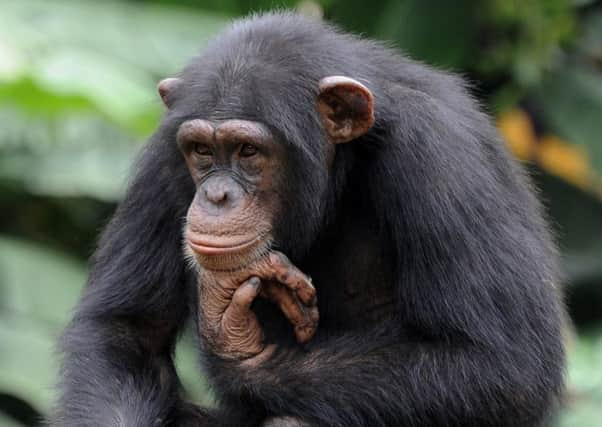Bad back? It might be your inner chimp


Evidence suggests that individuals with chimpanzee-like vertebrae are at greater risk of suffering a slipped disc.
Bad backs may partly be the result of learning to run before we could walk in evolutionary terms, scientists believe.
Advertisement
Hide AdAdvertisement
Hide AdThe rapid evolution of our ability to walk upright on two legs appears to have left some people vulnerable to back trouble.
Scientists from the University of Aberdeen, Simon Fraser University (SFU) in Canada, the University of British Columbia and the University of Iceland looked at the similarities between humans and chimpanzees, which split from a common ancestor about 8-9 million years ago.
Where humans ended up walking on two rear legs, chimps evolved to be knuckle-walkers and orangutans use all four limbs to climb trees. All have significantly different-shaped vertebrae.
Lead scientist Kimberly Plomp, a post-doctoral research at SFU, said: “Our study is the first to use quantitative methods to uncover why humans are so commonly afflicted with back problems compared to non- human primates.
“The findings have potential implications for clinical research as they indicate why some individuals are more prone to back problems.
“This may help in preventative care by identifying individuals, such as athletes, who may be at risk of developing the condition.”
Slipped disc, or “intervertebral disc herniation”, affects between 20 per cent and 78 per cent of individuals depending on the population.
It happens when cushioning pads of cartilage between vertebrae split and release a gel-like substance, putting pressure on spinal nerves.
Advertisement
Hide AdAdvertisement
Hide AdThe cause is not always clear but age is thought to be a factor, making spinal discs less flexible and more likely to rupture.
Dr Plomp’s team compared the vertebrae of 141 humans, 56 chimpanzees and 27 orangutans, each of which have a different mode of locomotion.
Professor Mark Collard of SFU and the University of Aberdeen said: “Our findings show that the vertebrae of humans with disc problems are closer in shape to those of our closest ape relatives, the chimpanzee, than are the vertebrae of humans without disc problems.
“As evolution occurred, our vertebrae would have changed as we evolved from using some form of quadrupedal locomotion, using four legs, to bipedalism, using two legs.
“However evolution is not perfect and some vertebral characteristics, such as the ones we identified as being similar to chimpanzees, may have remained within the human ‘blueprint’ and result in some people having vertebrae that are less able to withstand the pressures of bipedal walking.
“In short, our study suggests that the pathological vertebrae of some people may be less well adapted for walking upright”. The study found that human vertebrae with a common hallmark of “vertical” slipped disc known as “Schmorl’s nodes” looked more like those of chimpanzees than healthy vertebrae.
Slipped discs producing the symptom – protrusions of cartilage – were more likely to affect people “towards the ancestral end of the range of human shape variation”, said the researchers.
Such individuals may be less well adapted for bipedalism, they claimed.
Advertisement
Hide AdAdvertisement
Hide AdFuture research will include larger sample sizes and multiple human populations from different ancestral backgrounds, as well as the results of CT scans.
The paper is published online in the journal BMC Evolutionary Biology.